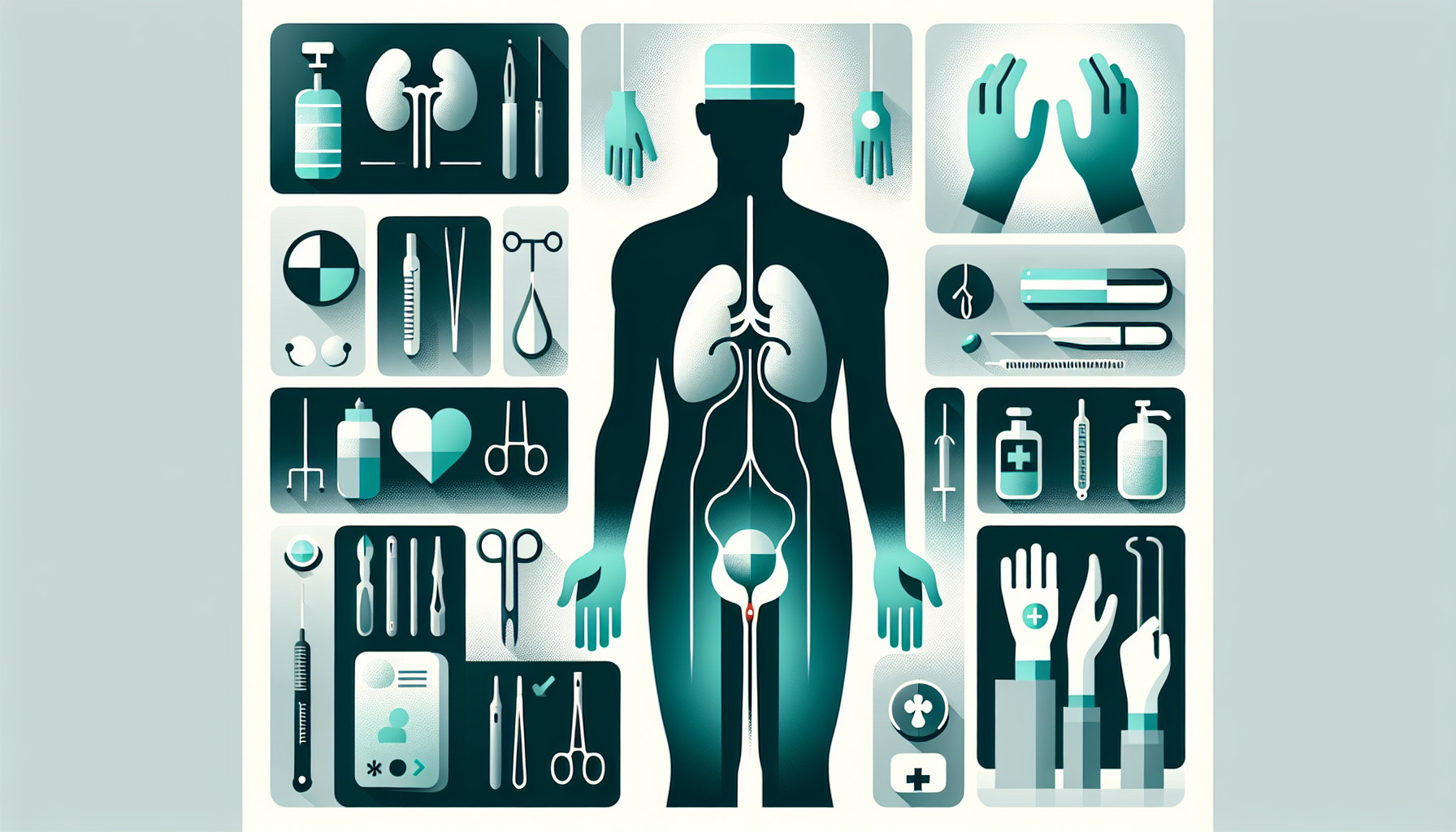Our Summary
This paper discusses different methods used to repair the kidney after a partial nephrectomy, which is a surgery that removes a portion of the kidney, usually to treat cancer. The researchers focus on a process called renorrhaphy, which is the stitching or sealing of the kidney after surgery. They look at how this technique has evolved over time and compare different methods, including the use of one or two layers of stitching, continuous or interrupted sutures, and other approaches like sealants and glues. The paper also explains improvements and modifications that have been made to these techniques. The goal of the paper is to provide a thorough understanding of how these surgical practices have improved, and to provide new insights into the current state of these methods.
FAQs
- What is a partial nephrectomy and why is it performed?
- What is renorrhaphy and why is it important in kidney surgeries?
- What different methods are used in renorrhaphy and how have they evolved over time?
Doctor’s Tip
One helpful tip a doctor might tell a patient about nephrectomy is to follow post-operative care instructions carefully, including taking prescribed medications, avoiding heavy lifting or strenuous activity, and attending follow-up appointments as scheduled. It is important to communicate any concerns or changes in symptoms to your healthcare provider promptly to ensure proper healing and recovery.
Suitable For
Patients who are typically recommended for nephrectomy include those with kidney cancer, kidney stones, kidney infections, kidney damage from trauma or other conditions, and kidney disease that has not responded to other treatments. Nephrectomy may also be recommended for patients with severe hypertension or kidney failure caused by polycystic kidney disease. Additionally, patients who are in need of a kidney transplant may undergo nephrectomy to remove a healthy kidney for donation.
Timeline
Before nephrectomy:
- Patient undergoes various tests and evaluations to confirm the need for nephrectomy, such as imaging tests, blood tests, and physical exams.
- Patient may receive preoperative instructions, including fasting before the surgery and medications to take or avoid.
- Patient meets with their surgical team to discuss the procedure, potential risks, and post-operative care.
During nephrectomy:
- Patient is administered anesthesia and the surgery begins.
- Surgeon removes the affected portion of the kidney, taking care to preserve as much healthy tissue as possible.
- Renorrhaphy is performed to repair the remaining kidney tissue and ensure proper functioning.
- Surgery is completed and patient is moved to the recovery area.
After nephrectomy:
- Patient may experience pain, fatigue, and other side effects from the surgery.
- Patient is monitored closely for any complications, such as bleeding, infection, or changes in kidney function.
- Patient may need to stay in the hospital for a few days for observation and recovery.
- Patient receives instructions for at-home care, including managing pain, monitoring incision sites, and gradually resuming normal activities.
- Follow-up appointments are scheduled to monitor kidney function and overall health in the weeks and months following the surgery.
What to Ask Your Doctor
What are the potential risks and complications associated with a nephrectomy surgery?
How long is the recovery process after a nephrectomy surgery?
Will I need any additional treatments or medications after the surgery?
What are the long-term effects of living with only one kidney?
How will a nephrectomy affect my overall kidney function?
Are there any specific lifestyle changes I should make after the surgery?
How often should I follow up with you after the surgery?
Are there any alternative treatments or procedures to a nephrectomy that I should consider?
How experienced are you in performing nephrectomy surgeries?
What is the success rate of nephrectomy surgeries at your facility?
Reference
Authors: Homewood D, Tan N, Fay T, Silagy A, Lawrentschuk N, Corcoran NM, Agarwal DK. Journal: Int J Urol. 2025 Apr;32(4):329-340. doi: 10.1111/iju.15658. Epub 2025 Mar 10. PMID: 40062576
